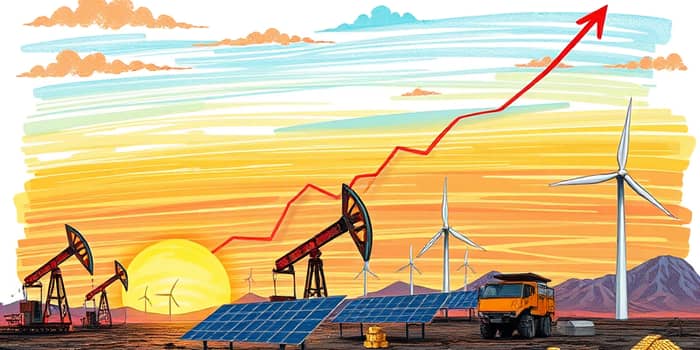
As global markets enter a phase of sustained price increases, the energy sector stands out as a principal beneficiary of the latest commodity supercycle. This phenomenon is reshaping investment priorities and strategic planning across industries, driving unprecedented profitability and growth for oil, gas, and renewable energy producers alike.
In this article, we explore the historical roots, primary drivers, and tangible impacts of today’s commodity supercycle on the energy landscape. We also examine the economic implications, risks, and forward-looking considerations for stakeholders.
A commodity supercycle refers to a prolonged period of rising commodity prices that typically extends beyond five years. These cycles arise from significant structural shifts, such as rapid industrialization or transformative technological adoption. Historically, supercycles coincided with events like the Industrial Revolution and the early 2000s expansion of China’s manufacturing base.
During the boom phase, commodity exporters experience soaring revenues and profits, while the bust phase sees supply surpluses and price contractions. Recognizing the phases of a supercycle helps policymakers, investors, and companies position themselves for maximum advantage.
Multiple factors converge to fuel today’s commodity upswing, each reinforcing the other in a complex interplay of supply and demand dynamics.
As commodity prices climb, the energy sector reaps a cascade of benefits across traditional and emerging segments.
These core beneficiaries of the supercycle are experiencing profit surges, improved cash flows, and stronger balance sheets. As a result, many are accelerating project development, exploration programs, and dividend distributions.
High commodity prices are reshaping capital flows and strategic decisions across global markets. Energy companies are reporting wider margins and reinvesting in capacity expansions, while commodity-exporting nations enjoy improved fiscal balances and currency strength.
For investors, the current cycle presents opportunities in both traditional energy equities and clean technology. Attractive valuations in mining stocks combined with soaring spot prices make these sectors ripe for portfolio allocation.
Moreover, energy security considerations have elevated the importance of reliable supply sources. Natural gas and domestic oil production are viewed as critical buffers against global volatility, prompting governments to support upstream investments.
While the supercycle offers significant upside, it is not without hazards. Price volatility can trigger abrupt market corrections, and policy shifts toward stricter emissions targets may alter demand trajectories.
Looking ahead to 2025 and beyond, stakeholders should monitor supply bottlenecks, policy developments around carbon pricing, and technological breakthroughs in energy storage and low-emission fuels.
By staying vigilant and adaptable, energy producers, investors, and policymakers can harness the benefits of this supercycle while mitigating its inherent risks.
Ultimately, the current commodity supercycle offers a rare window of opportunity to accelerate the global energy transition, bolster economic growth, and secure long-term energy supplies. Through strategic investments and prudent risk management, the energy sector is positioned to emerge stronger and more resilient than ever before.
References













